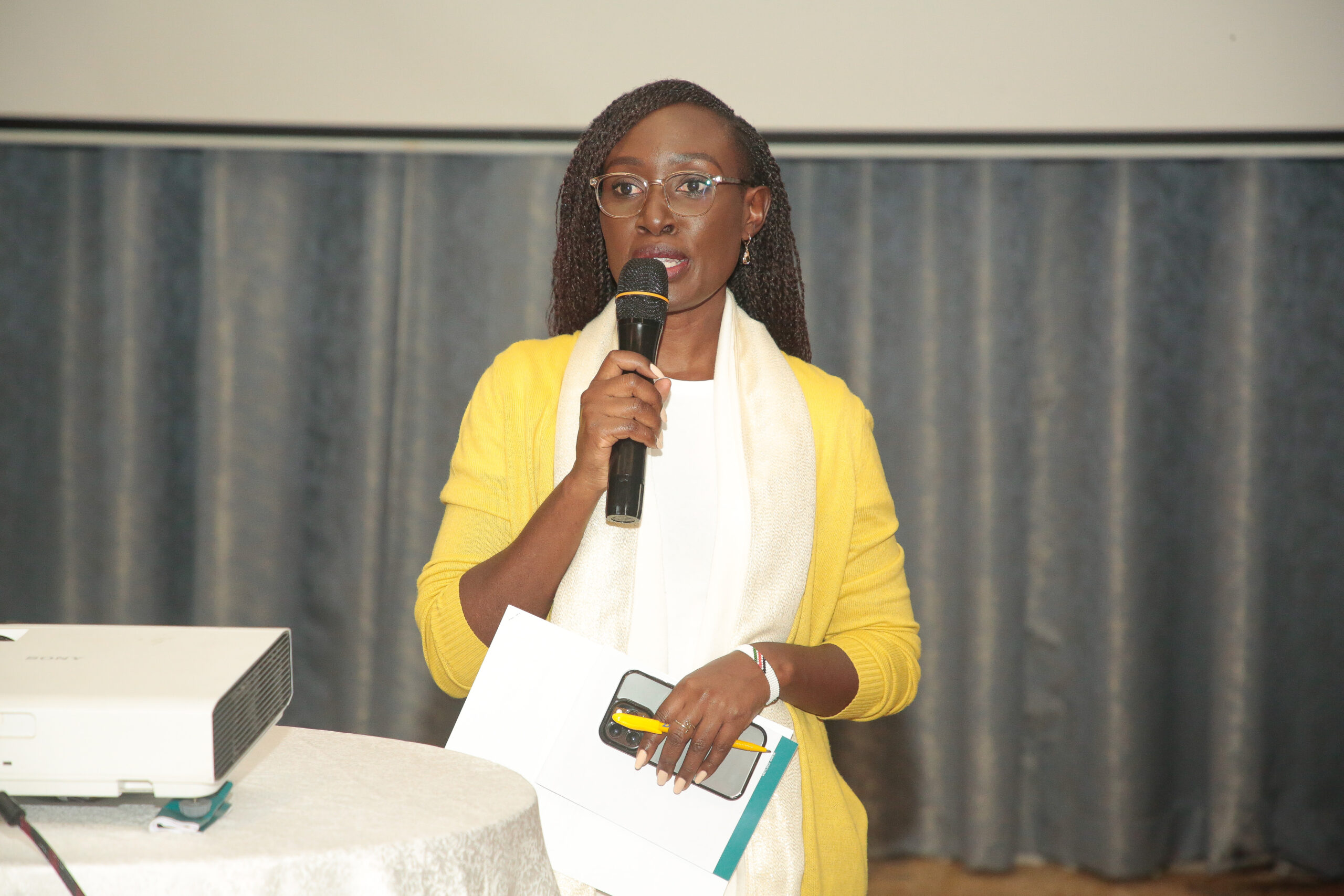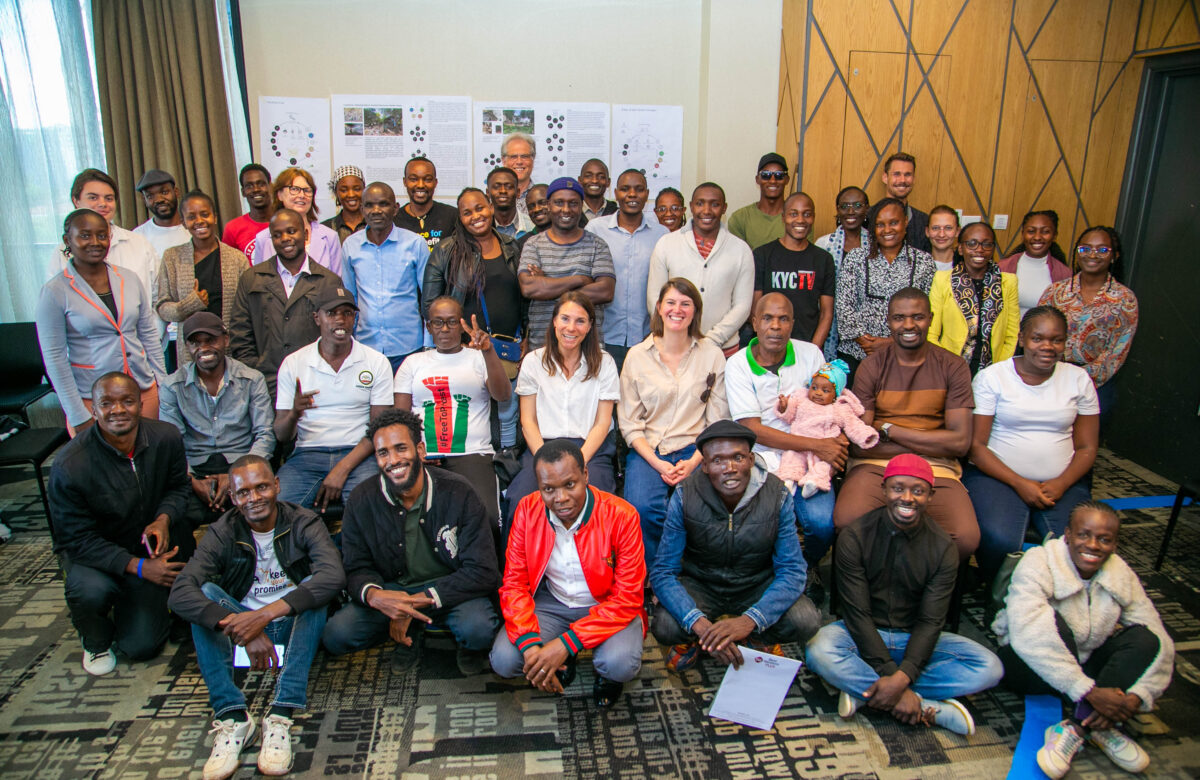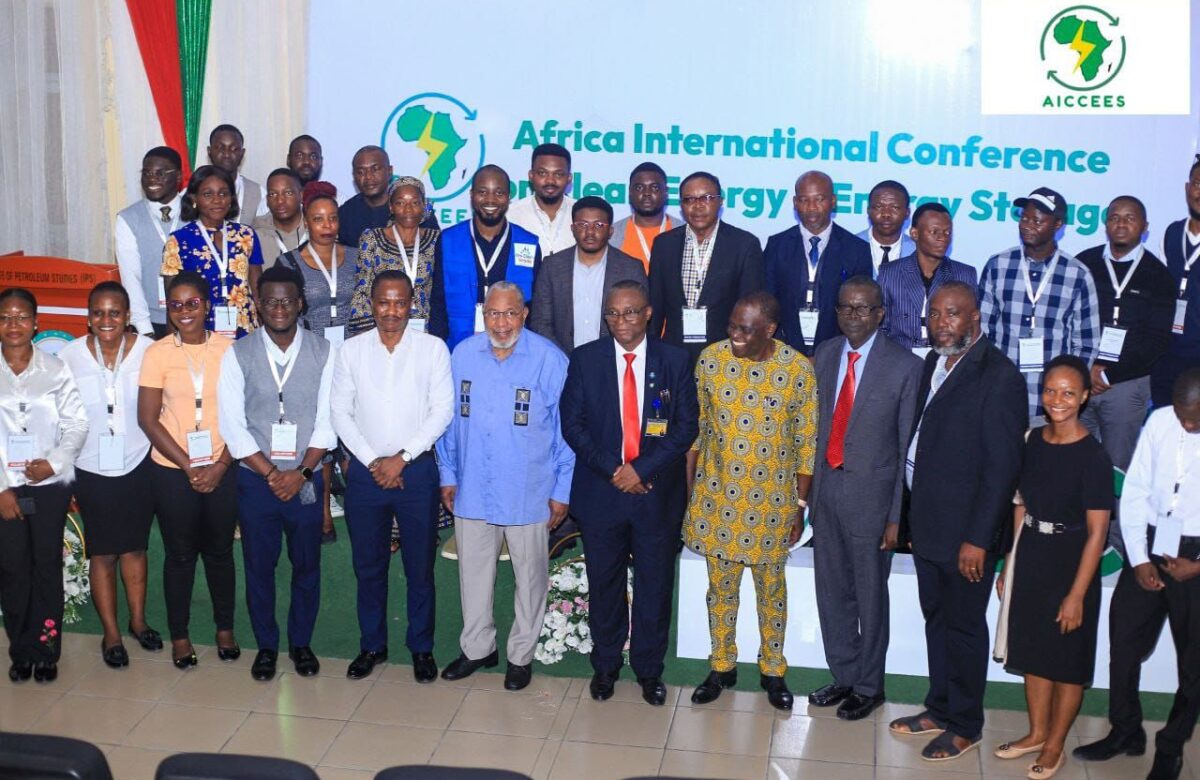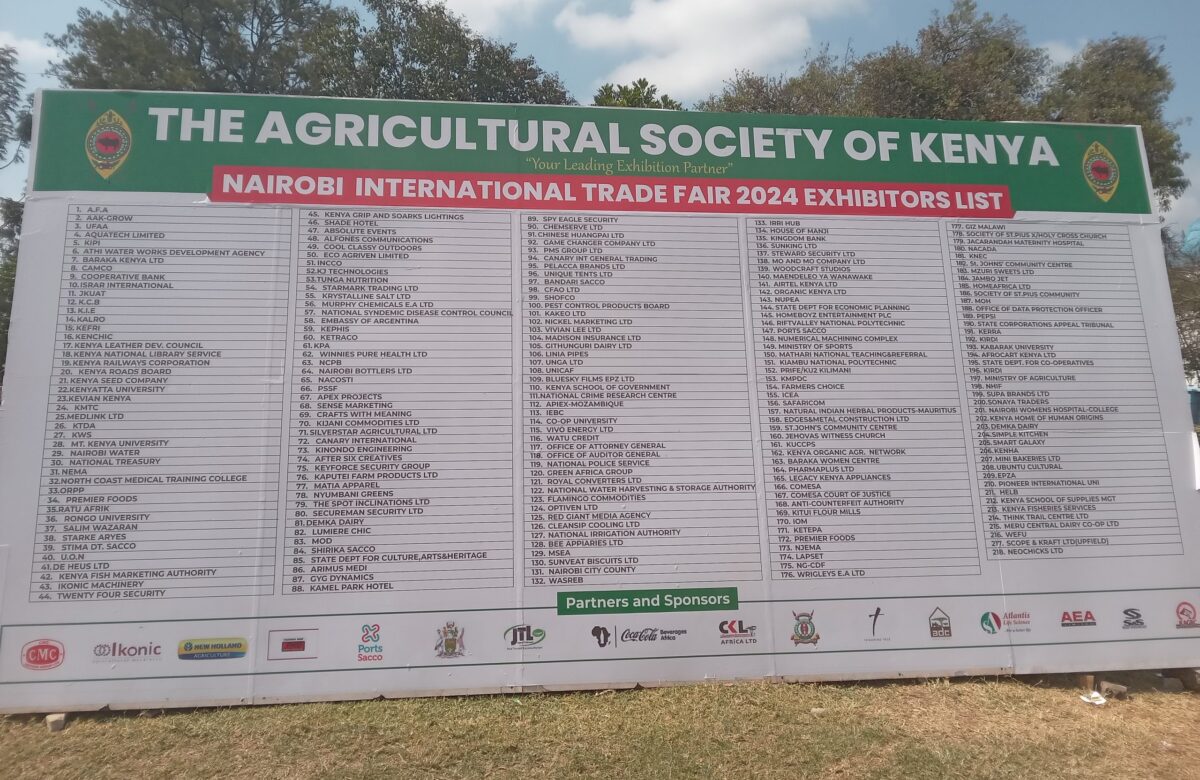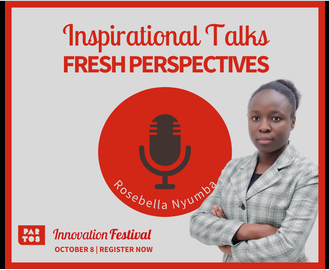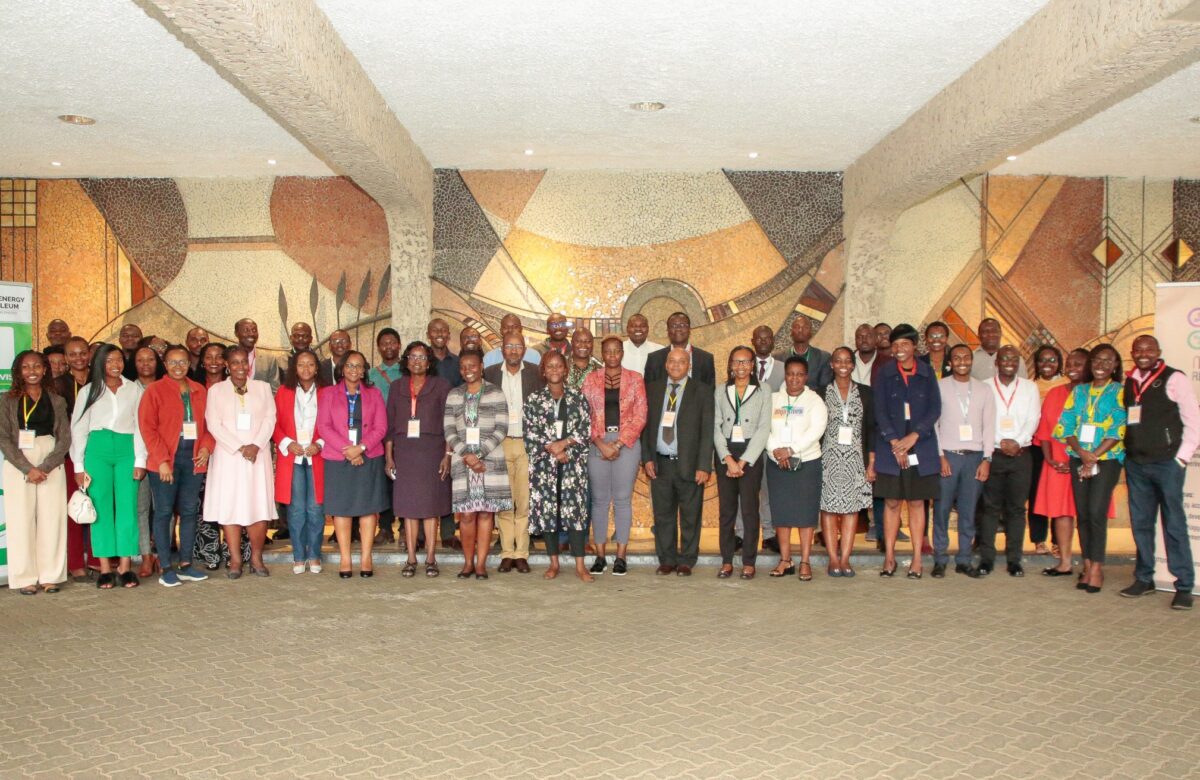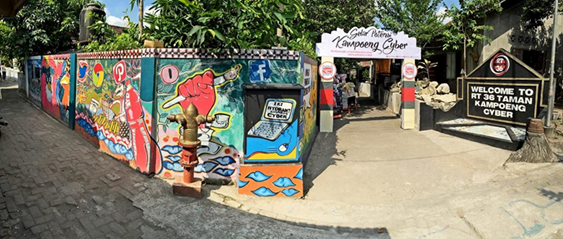Background Context
The journey began with the Covid-19 lockdowns, which disrupted the existing social communication ecosystem. As digital tools played a critical role in the disaster response, it highlighted the infrastructural gaps in urban low-income areas. Kenya continues to demonstrate how digital infrastructure is revolutionizing urban areas and responses to social issues. However, the first phase of the project, digitalization and household resilience in Mathare, revealed that the digital divide is prevalent and extends beyond physical infrastructure to soft infrastructure. This raised the question of how to provide both physical and soft digital infrastructure inclusively in Mathare.
The idea of establishing a digital hub emerged as a solution for bridging the digital divide. Data collected indicated that digital needs are diverse and require multi-actor and stakeholder collaboration to collectively provide digital infrastructure. The digital hub model developed during this process is based on the following concepts:
Innovation Hubs: These areas offer a range of services and activities to companies to support their digital transformation and innovation through a one-stop shop. This idea is ideal for providing diverse digital needs in one area.
Cyber Cafes: These current digital service intermediaries support customers in performing digital tasks that they either lack the equipment for, or the technical skills to perform.
Ajira: A government program offering digital training to empower the community with a range of digital skills for daily activities.
Community Learning Centres: These have inclusive management involving community members, tailored needs, non-digital services that remove barriers to use, and dynamic leaders.
Access to information: Access to information was highlighted as a key use of digital tools during the interviews. This encompasses various aspects of life in Mathare, including news, job and education opportunities, and the needs of community health promoters who rely on timely and updated information to perform their duties effectively.
These concepts all aim to facilitate digital growth in communities using different strategies.
Multi stakeholder Co-creation Workshop
On 18 June 2024, Nuvoni hosted a co-creation workshop which brought together actors in the digital environment; from Researchers, Mathare/ Mukuru/Kibera Community members, Local administration, Digital services providers, Ajira, Community based Organizations, Nairobi city county digital economy and ICT Authority.
The aim of the workshop was to bring together stakeholders to present and get an appraisal of the cocreation process and the actual digital hub model developed for Mathare. This workshop aimed to unite government representatives, community members, and digital service providers/practitioners (the private sector) to evaluate the model’s suitability for providing digital services in informal settlements and collaboratively identify necessary improvements as well as explore the adaptability of the model to other informal settlements. Another key objective of the workshop was to assess the proposed model’s capacity to allow for the coexistence of multiple actors in the digital market and to define the roles they can play in providing digital services.
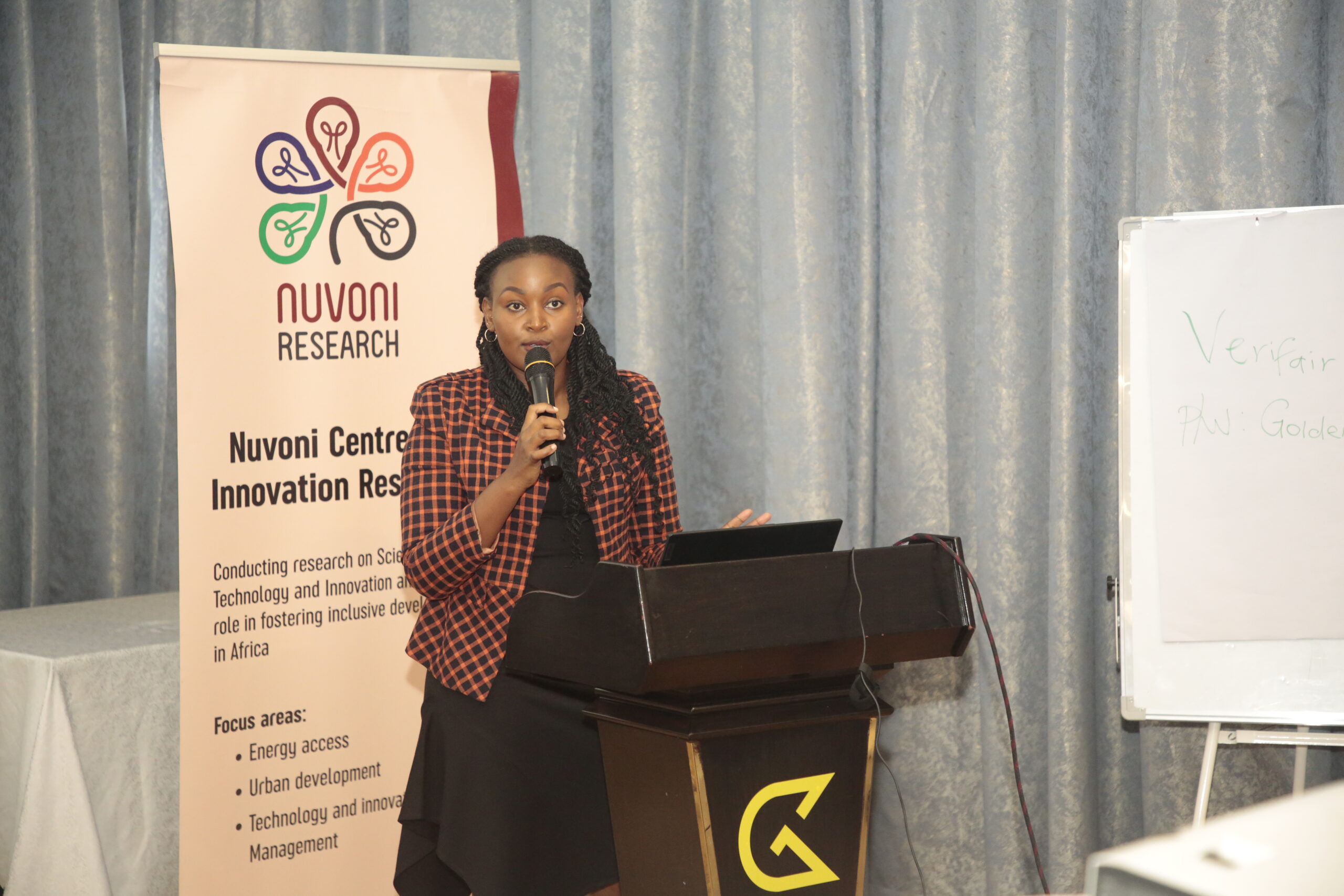
Summary of the Model
The Mathare Digital Hub model has four main elements namely:
The Process- showcases the collaborative method of crafting a digital hub that ensures equality and the communities digital needs are well addressed. The process involved key informant interviews with previously identified target groups. The interviews were aimed at building knowledge on one the digital tools use and the daily environmental and social factors constituting to the current digital uses and needs. Additionally, a series of workshops facilitated dialogues with different stakeholders in the provision and management of digital services.
Digital Hub Services This element presents the proposed digital hub services gathered from the interviews and co-creation workshops. The proposed services emphasize digital literacy, income-generating activities, and creative digital skills. Supporting services, such as daycare facilities and printing, were also proposed to enhance the functionality and accessibility of the digital hub.
Governance: The governance structure is a multi-stakeholder board comprising two committees: a technical committee and a management committee. This structure ensures that various perspectives and expertise are included in the decision-making processes, promoting effective management and oversight of the digital hub.
Sustainability and Funding: The sustainability of the digital hub is supported through proceeds from the services offered. This model ensures that the hub can maintain its operations and continue providing valuable services to the community over the long term.
Model Appraisal
This model was appraised during the workshop through a SWOT Analysis session that was aimed to facilitate discussions among stakeholders in the digital space to share their experiences and expertise in digital services provision and infrastructure and evaluate the model we developed and give recommendations on the model. Below is the summary of the discussions.
The model was first evaluated through a SWOT analysis as shown below;
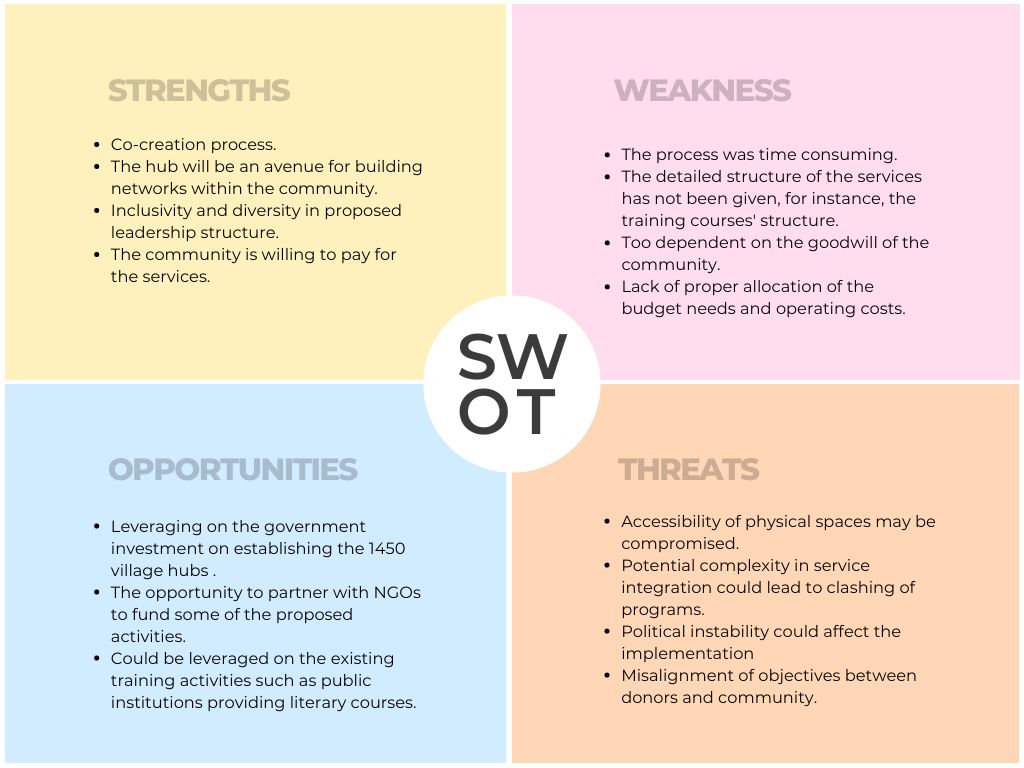
Identifying the potential risks was just the first step. Participants went further to share their recommendations on how to capitalize on strengths and minimize threats. Some of the key strengths of the model that were suggested as potential areas to capitalize on included understanding the dynamics of the community, co-creation process on coming up with the digital hubs sites and services and full disclosure of information to the community. On the other hand, the risks to be minimized and averted as discussed included different activities in the hub could cause complexity in service delivery, lack of a clear management framework, and reliance on political goodwill for implementation. These risks would be minimized through creating a detailed structure of the services , integrating the management of host institutions in the management committee and Coming up with a hybrid space (physical + online) to minimize the costs of creating physical locations.
They suggested creating more awareness in the community about the significance of digital hubs and fostering a sense of ownership by recognizing success stories and engaging people in the process. Other recommendations included formulating a detailed structure of the services, conducting intensive community involvement to boost attendance, developing a constitution to guide the management process and keep politics away from governance, and properly outlining the budgetary needs of the digital hubs. These steps will provide a clearer idea of the financial feasibility and help incrementally improve the model’s success.
Overall, the model was hailed as one that could potentially be adapted to other informal settlements but that could be constantly appraised through data collection aimed at understanding the changing needs and challenges of the different communities.
Stakeholder Engagement Framework
This session featured the discussion on the main actors, their power, support and role in enhancing digitalization in Kenya. Many actors are in support of the digitalization agenda in Kenya. Most of the actors are powerful but with limited support to digitalization in Kenya.
Below shows a summarized power-support actor map as co-created by the participants.
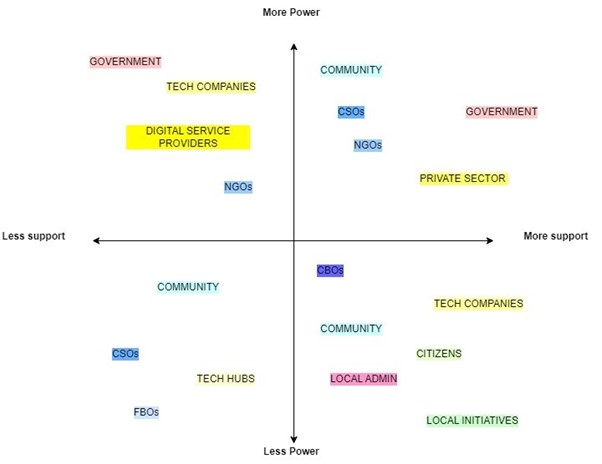
Conclusion
‘Communities creating solutions for communities’
The Mathare digital hub model is adaptable and can be especially useful in addressing community needs and challenges by creating a digital hub that addresses those needs. We aim to deliver a proposal and policy briefs to the ICT Authority in the hope that these crucial facilities will be delivered to marginalized urban communities.
Story by: Diana Mwau
Related News
Physical Address
No. MK088, Ushindi West Avenue,
Mukuyu Rd (Mukuyu West Wing), Thome 1
Nairobi, Kenya
Organization
Subscribe for newsletter & get news, events and publications updates
Contact Us
Office Tel: (+254) 20 8009928 |
Mobile: (+254) 706 324 467
© 2025 Nuvoni Research

